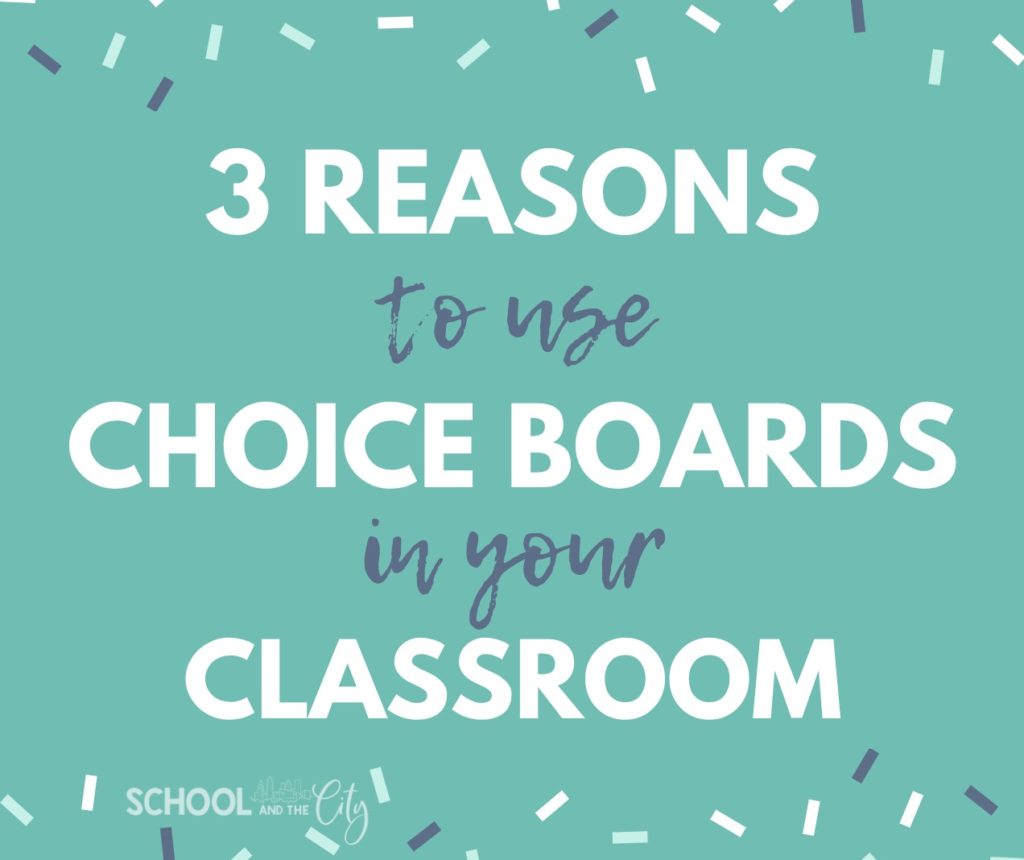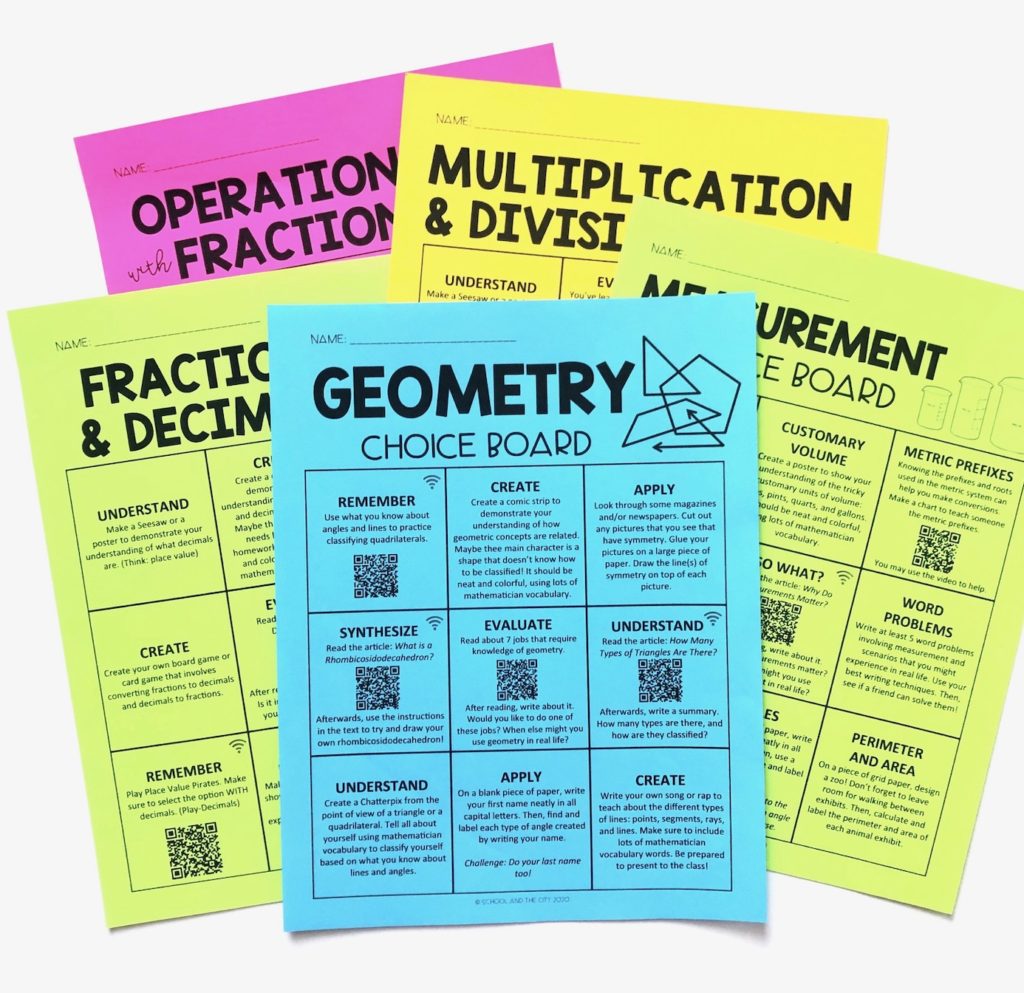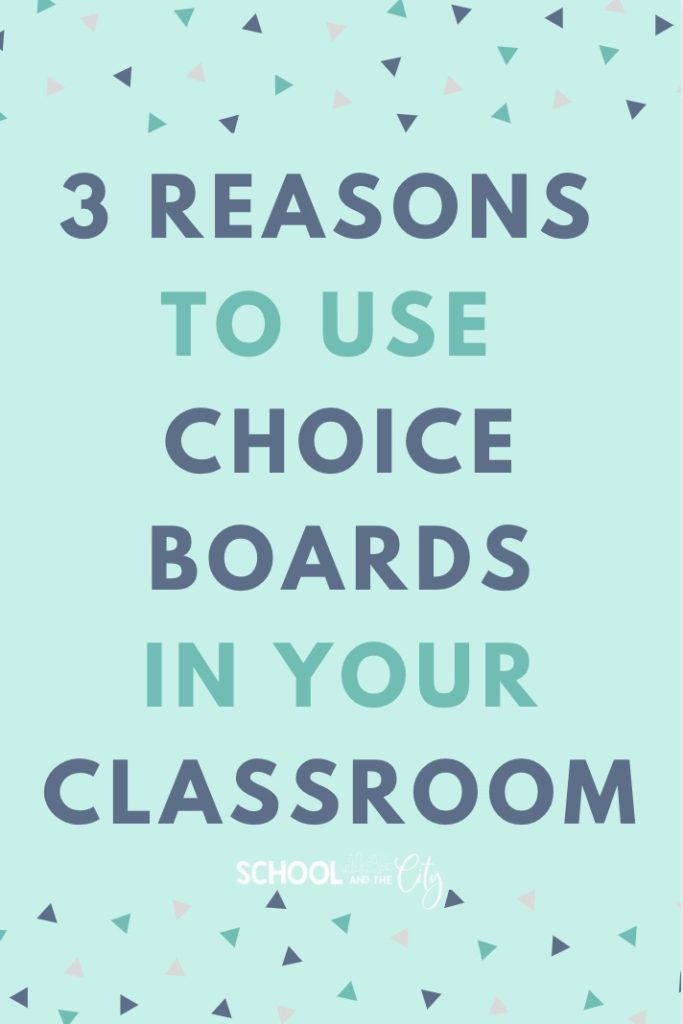
WHY You Should Use Choice Boards:
There are so many research-based reasons to use choice boards in your classroom. Here are just a few reasons why I’ve found choice boards to be a valuable resource in my own classroom:
1. intrinsic motivation
Choice boards provide students the opportunity to make their own choices, which increases intrinsic motivation and therefore increases meaningful learning. Students are more likely to internalize content if a learning activity is interesting to them or if they can make a connection to their own life.
2. learning styles
Choice boards also cater to multiple learning styles, allowing students to explore content in ways that are exciting for them. That’s empowerment! Students will naturally gravitate towards activities that work with their learning style. However, carefully-designed boards offer opportunities for students to explore additional learning styles, too.
3. differentiation
I always encourage my students to choose activities that are beneficial to them. I try to make my classroom an environment where students are comfortable taking risks and challenging themselves. In order to maintain a growth mindset, I discourage students from choosing activities that will not help them grow academically. But ultimately, it’s their choice, and all of my boards are specifically designed, so I know that anything they choose is aligned to standards and Bloom’s Taxonomy.

HOW You Can Use Choice Boards:
1. early finishers
Providing choice = meaningful learning for your early finishers. Let no instructional time be wasted!
2. homework
I’m not a huge fan of homework (due to lack of benefit according to research), but I’m supposed to assign it. So, I create a math choice board for my students to work on (as they wish) each week. I change the activities out to include workbook pages, online practice, interactive games, and making math connections at home.
3. assessment
My district is moving towards standards-based mastery, and along with that comes the new concept of allowing students to choose how they want to demonstrate their knowledge. Some people do this in place of paper/pencil tests, while some teachers use choice in addition to paper assessments.
4. free choice or tic-tac-toe
Sometimes I allow my students to choose freely, but sometimes I ask them to complete a tic-tac-toe first. I strategically place the activities for tic-tac-toe so that students are required to do a variety of tasks at various levels of academic thinking and creativity.
Although I use choice boards all the time, you can start slow. Assign a choice board for students to work on during independent reading, or find one that will work with your current science or social studies unit. I love using content-area choice boards that involve using literacy skills.

If you need help getting started, first read this blog post I wrote.
Ready to dive in? I’ve got over 50 editable science, social studies, and math choice boards in my TpT store, which you can find right here.
